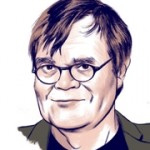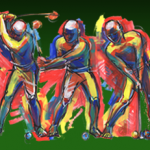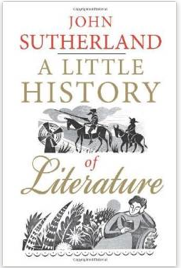 This morning The Philadelphia Inquirer published a story on The John Updike Childhood Home—“Updike’s home to open as museum”—that was written by William Ecenbarger. If the name sounds familiar, perhaps you read about Ecenbarger’s tour of Updike country with Updike himself, with which Adam Begley chose to open the first chapter of his recently published biography. This time there was no drive, and Ecenbarger’s tour guide was curator Maria Mogford, who led him through the house that’s still in the “deconstruction” phase as it moves closer to becoming a finished product as one of America’s literary landmarks.
This morning The Philadelphia Inquirer published a story on The John Updike Childhood Home—“Updike’s home to open as museum”—that was written by William Ecenbarger. If the name sounds familiar, perhaps you read about Ecenbarger’s tour of Updike country with Updike himself, with which Adam Begley chose to open the first chapter of his recently published biography. This time there was no drive, and Ecenbarger’s tour guide was curator Maria Mogford, who led him through the house that’s still in the “deconstruction” phase as it moves closer to becoming a finished product as one of America’s literary landmarks.
“When it opens, probably next year, the site will join childhood residences-turned-museums of other famed American authors,” Ecenbarger writes. “Mark Twain is forever linked to Hannibal, Mo.; William Faulkner to Oxford, Miss.; Emily Dickinson to Amherst, Mass. But in one respect, the building at 117 Philadelphia Ave. will stand out.
“More than any other American writer, Updike made his first home an ongoing setting, in intricate detail, for his 61 volumes of novels, short stories, poems, and essays. The house, where he lived with his parents and a grandparent and where he said his ‘artistic eggs were hatched,’ was also where many of his last stories are set.
“‘He said if he ever had a ghost, it would haunt this house,’ says Mogford, an English professor at nearby Albright College.”
But don’t let that stop you. Society president James Plath slept in the house on one visit and can vouch for the fact that it remains as happy a place as it was in Updike’s memory. Though the house isn’t finished yet, Mogford will still take people through it on private tours if the requested day and time mesh with her schedule. Hardhats are not required. Contact her via email at mmogford@albright.edu.
 Garrison Keillor, the American humorist and writer best known for hosting “A Prairie Home Companion,” has featured poems by John Updike on his website, so it’s no surprise that he thinks highly of Updike.
Garrison Keillor, the American humorist and writer best known for hosting “A Prairie Home Companion,” has featured poems by John Updike on his website, so it’s no surprise that he thinks highly of Updike.





